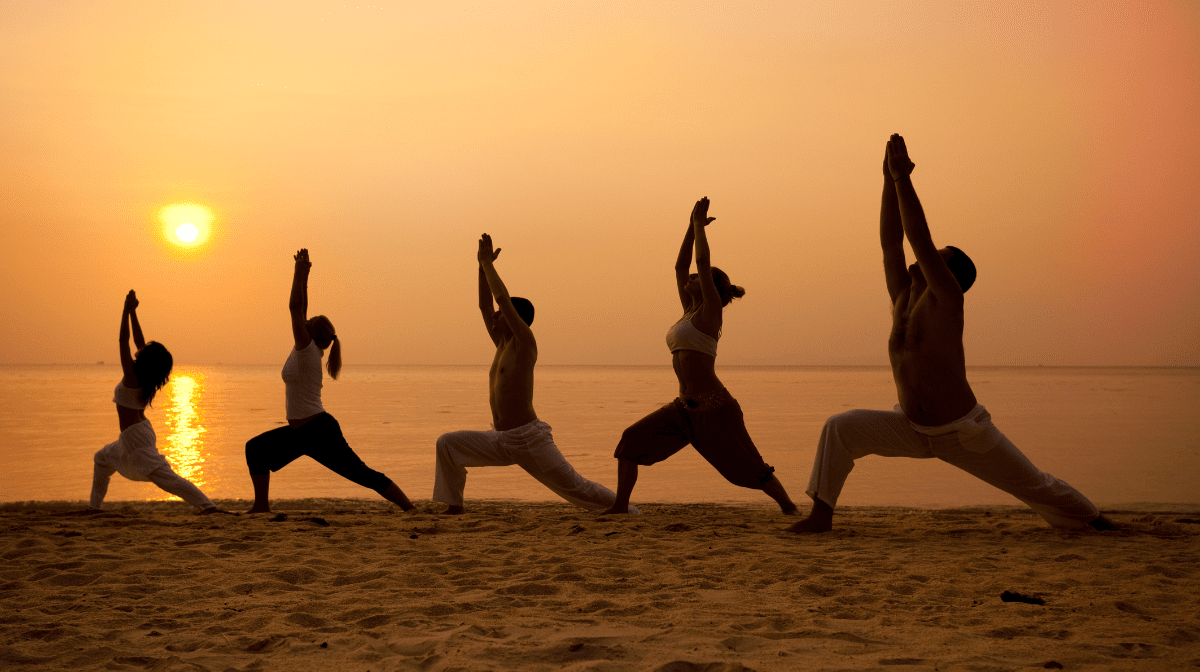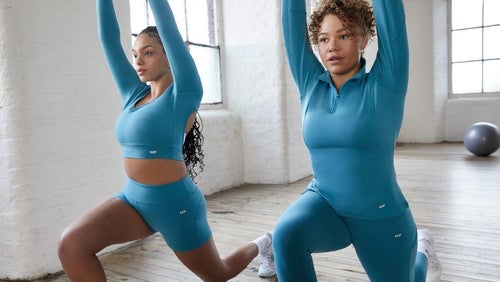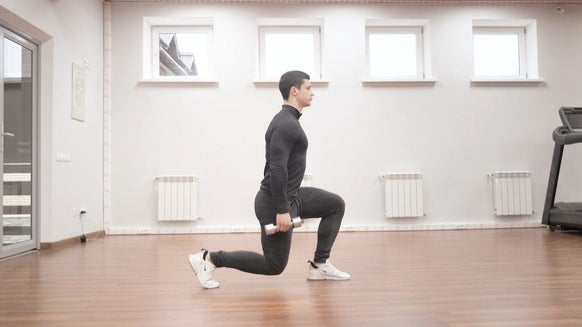4 Different Yoga Styles & Their Unique Benefits

Today is the International Day of Yoga, which means people around the world are getting together and celebrating this sacred practice. This super popular form of exercise is praised for its benefits to both the body and brain. Yoga combines precise movements and physical challenges with mindfulness techniques to encourage relaxation and strengthen the mind-body connection. In a fast-paced world, yoga gives us the time to slow down and reconnect with ourselves.
1. Hatha Yoga
Hatha is a posture-based yoga that is perfect for beginners. The practice traditionally emphasizes diet, the act of purifying, regulating your breathing, and using postures called asanas. The original Hatha yoga practice involved performing a series of asanas in one fluid motion to create sequences like the 'salute to the sun', and this is still done today.
Traditionally, Hatha emphasized mastering the body as a means of attaining a state of spiritual perfection in which you are removed from the physical realm.
Hatha Yoga can be traced to Gorakhnath, founder of the Kanphata Yogis in the 11th century, but is rooted in traditions dating much further back to Patanjali, one of the authors of the famous yoga works Yoga Sutras and Mahabhashya, in the 2nd century BCE.
Today in America, Hatha yoga is a popular form of exercise that promotes strength and mental relaxation. In addition to asanas, Hatha yoga typically involves meditation and breath control techniques.
The word "Hatha" means 'discipline of force' in Sanskrit; today, the term is used to refer to any yoga class that involves poses, and in the US, this typically means holding these poses for long periods. Classes may use a variety of poses, including standing, seated, and lying down positions.
Hatha yoga classes are beneficial for beginners and they do not require an advanced skill set.
The practice is a great way to get into yoga and has many benefits including strengthening your core, reducing cortisol levels (helping you sleep), and managing stress and depression.

2. Vinyasa Yoga
Vinyasa yoga comes from the Ashtanga Vinyasa Yoga tradition. The term "Vinyasa" can be interpreted in a few different ways, but essentially means ‘to place in a special way'. This type of yoga connects movement and breath to find balance. Vinyasa involves performing a specific sequence of poses with your breath to attain a flow. You'll typically practice upward, open movements while inhaling and downward movements or twists while exhaling.
The term "Vinyasa" can refer to many different types of yoga including Power Yoga, Baptiste Yoga, Ashtanga, Jivamukti, and Prana Flow.
Vinyasa makes use of specific poses, similar to Hatha yoga. But there are a few key differences between these two styles.
The primary focus of Vinyasa yoga is the flow between different poses. This style is unique in that there are no interruptions from one pose to the next, and the importance is in the flow of movement rather than the precise details of each pose. The continuous flow and focus on breathing support focus and mindfulness.
Vinyasa yoga is more physically challenging than Hatha yoga and increases both strength and mobility. It's great for experienced yogis looking for a focused session but is also very doable for beginners as it can be tailored to meet each person's unique needs.
This type of yoga is beneficial for cardiovascular health, strength, flexibility, and stress reduction.
3. Iyengar Yoga

Iyengar Yoga is a type of Hatha yoga created by Bellur Krishnamachar Sundararaja or B.K.S. Iyengar, an Indian native and world-famous yoga guru. This type of yoga heavily emphasizes proper alignment of the body and breath control, and like Hatha, involves holding poses for long periods.
Iyengar is based on the eight limbs of yoga found in Yoga Sutras. Iyengar yoga classes will often offer props like blocks, bolsters, or straps for additional support if students need help with alignment or to prevent injury. This practice is typically slow-paced and focused on form and precision, making it ideal for beginners to learn the basic poses.
This form of yoga, like many others, emphasizes entering a focused state of mind and removing yourself from distractions. Iyengar is unique in that it is used in therapy, with sequences designed to provide support for various conditions including depression, chronic pain, and functional disability.
Iyengar will help improve flexibility and strength and your circulation, digestion, nervous system, and lymphatic system.
4. Bikram Yoga
Bikram yoga, also known as hot yoga, is another type of Hatha yoga and was
Bikram uses high heat to promote sweating, relax the muscles, and increase circulation. The heated environment is said to both help prepare the body for movement and detox it from impurities.
Bikram yoga is highly structured in that it follows a specific series of 26 asanas and two breathing exercises. The series of poses is made to provide a full-body workout.
Take Home Message
When it comes to yoga, there's a large variety of different styles you can try, each with its own specific benefits and focus. Although yoga originated in ancient India, it is now a global phenomenon with people all over the world celebrating the International Day of Yoga on June 21st. If you want a form of exercise with a rich history, that will strengthen your mind as well as your body, give one of these yoga styles a try and see what it can do for you.
READ THESE NEXT:

4 Exercise Styles to Improve Your Mental Health | Beginner Mindfulness Workout Routines
Train your body and your mind.

A Full Body Workout Designed For A Small Bedroom
Make the most of your space.

A Rutgers University Honors graduate, Jamie grew up on the Jersey shore and double majored in Comparative Literature and Anthropology in college. Jamie is an experienced writer in the health and wellness, biotech, and eCommerce fields. She loves writing with a purpose and has even written for the Department of Justice.
Jamie became drawn to exercise during her time in university and began to notice the physical and mental benefits of moving your body daily. Today, Jamie enjoys Pilates, light weight training, and going on long walks in nature daily.
Jamie is also passionate about eating right and prioritizing gut health and immunity. She is always trying the next innovation in health and wellness. When she’s not writing articles, Jamie enjoys reading, playing guitar, and finding dogs to play with.











